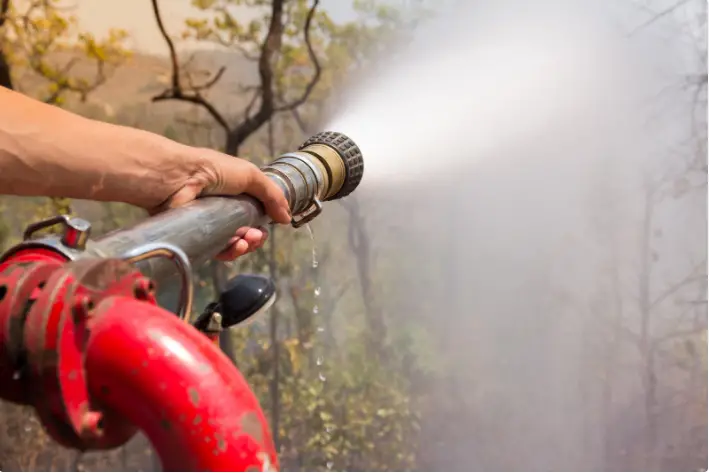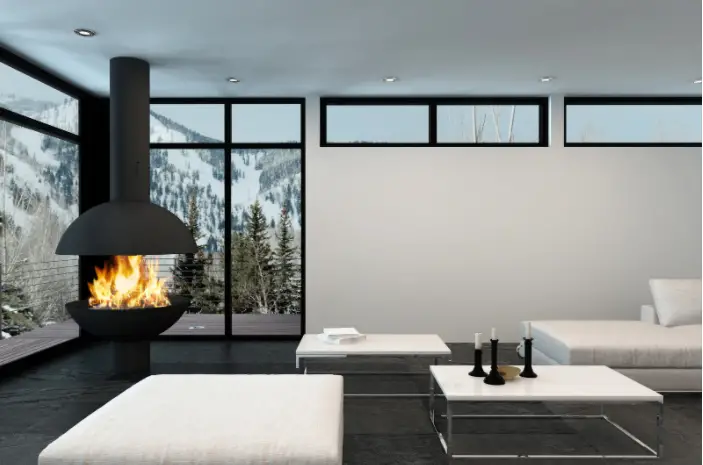
If you live in hot, desert-like areas of the world, such as in California, you might be looking for ways to improve indoor air quality during wildfires. Smoke is the most common problem that arises during wildfires, but that shouldn’t be a problem if you have methods to clean up your indoor air.
Too much smoke is bad for your health, especially if you are in an enclosed space where the smoke couldn’t escape or circulate better than when outdoors. We care about your health and that’s why we’ve written this article on ways to breathe easily indoors amidst wildfire smoke outside.
We’ve talked about the health effects of air pollution on humans so we should do something about smoke. This is especially the case if you have kids and seniors at home since they are more prone to having respiratory problems when inhaling smoke.
How long does it take for air quality to improve after a fire?
That depends on how big the fire is. For small incidents, it will take about a day or so for the smoke to dissipate. However, for bigger wildfires, the smoke can last up to a week because the wind needs to blow the smoke far away much longer.
In general, smoke will last longer in your area if the wind doesn’t blow strongly or if your home isn’t built on higher ground.
How can we improve indoor air quality during fires?
If we become prolonged to wildfire smoke, we’re exposed to the long term effects of secondhand smoke. That’s why we need to improve indoor air quality with the following methods:
- Lessen cooking during wildfire season. Cooking will only promote more smoke particles in the air, which will worsen the indoor air quality at home. If you can, prepare microwaveable dishes for the meantime until the smoke dissipates or use cooking oil that causes less smoke.
- If you cook or burn trash outside, extinguish fire responsibly. During wildfire season, it’s best to always stay alert or lessen outdoor fires that you make. If you have a barbecue party outside, make sure you clean up thoroughly. Check your local ordinances and laws on how to burn trash responsibly if you need to burn them due to lack of proper disposal (e.g. pruned tree branches).
- Don’t keep the air stagnant indoors. Make sure your indoor area gets enough ventilation. Open the windows and doors from time to time but make sure to close them when the air gets smoky outdoors. When indoor air becomes less stagnant, it will move the smoke easier and it will be a breeze (pun intended) to drive it out of the house.
- Turn on the air purifier. An air purifier will lessen the smoke inside your home thanks to its activated charcoal/carbon filter, which sucks up the odor. Its HEPA filter, on the other hand, will take care of the smoke debris such as dust.
- Avoid smoking indoors. This may sound obvious, but some people still unmindfully smoke indoors, even with kids at home! Lessening your smoke sessions or quitting will help to reduce pollution at home.
How do you get rid of wildfire smoke in your house?
Wildfire smoke is inevitable, especially since it can affect communities and not just your home. It may take a few days for the smoke to settle, but don’t worry – here are some methods to get rid of wildfire smoke indoors:
- Invest in an air purifier. These units can be placed around the house and absorb smoke odor and particles thanks to their filters. Many of these air purifiers are not that expensive and are also space-saving so you can use them to neutralize wildfire smoke.
- Use fans to drive smoke outside. You can also use your air conditioner fan mode or an electric fan to blow away the smoke out of the house. Stagnant air can make the smoke stay longer so it’s best to drive it out. Using fans is also helpful if the wind speeds in your area aren’t very high so smoke doesn’t move away too quickly.
- Keep the doors and windows closed. Once you’ve driven out the smoke, keep all of the entry and exit points closed until the wildfire smoke has dissipated outside. Then, you can turn on your cooling devices (e.g. electric fan or A/C unit) to counteract the summer heat.
- Change your filters as recommended. Whether you have an HVAC or a simple air purifier, changing the filters of these devices will help in easily absorbing smoke from the air. A dirty filter simply means trouble as it will bring back the smoke into the air.

How do you clean the air in your house from smoke?
To maintain your home’s air quality, here are ways to get rid of smoke:
| Ventilation |
When your home isn’t properly ventilated, the smoke can stay inside for a long time. That’s why proper ventilation is important.
From time to time, loosen up your windows and doors to let some air outside, especially when it’s hot. Then, when the temperature is warm indoors, turn on your air conditioner. |
| Air purifiers | An air purifier is a device that gets rid of dust and particles, as well as odors, from the air. If you have an air purifier that’s well-rated for your indoor space size, it will help to clear out the smoke. |
| Blower fans | Whether it’s your air conditioner fan or a standalone electric fan, having a blower fan will easily drive out the smoke to the outside. This means that your home will be safe from smoke smells. |
If you want to find out more, check out the 10 ways to reduce air pollution at home.
Conclusion
As a whole, wildfires can create terrible smoke that will linger for days, but it doesn’t mean you have to inhale it! There are ways to block off smoke to protect your home’s indoor air quality, which we mentioned above. By doing this, you’re lessening the likelihood of coughing, sneezing, allergies, and asthma within your household.


